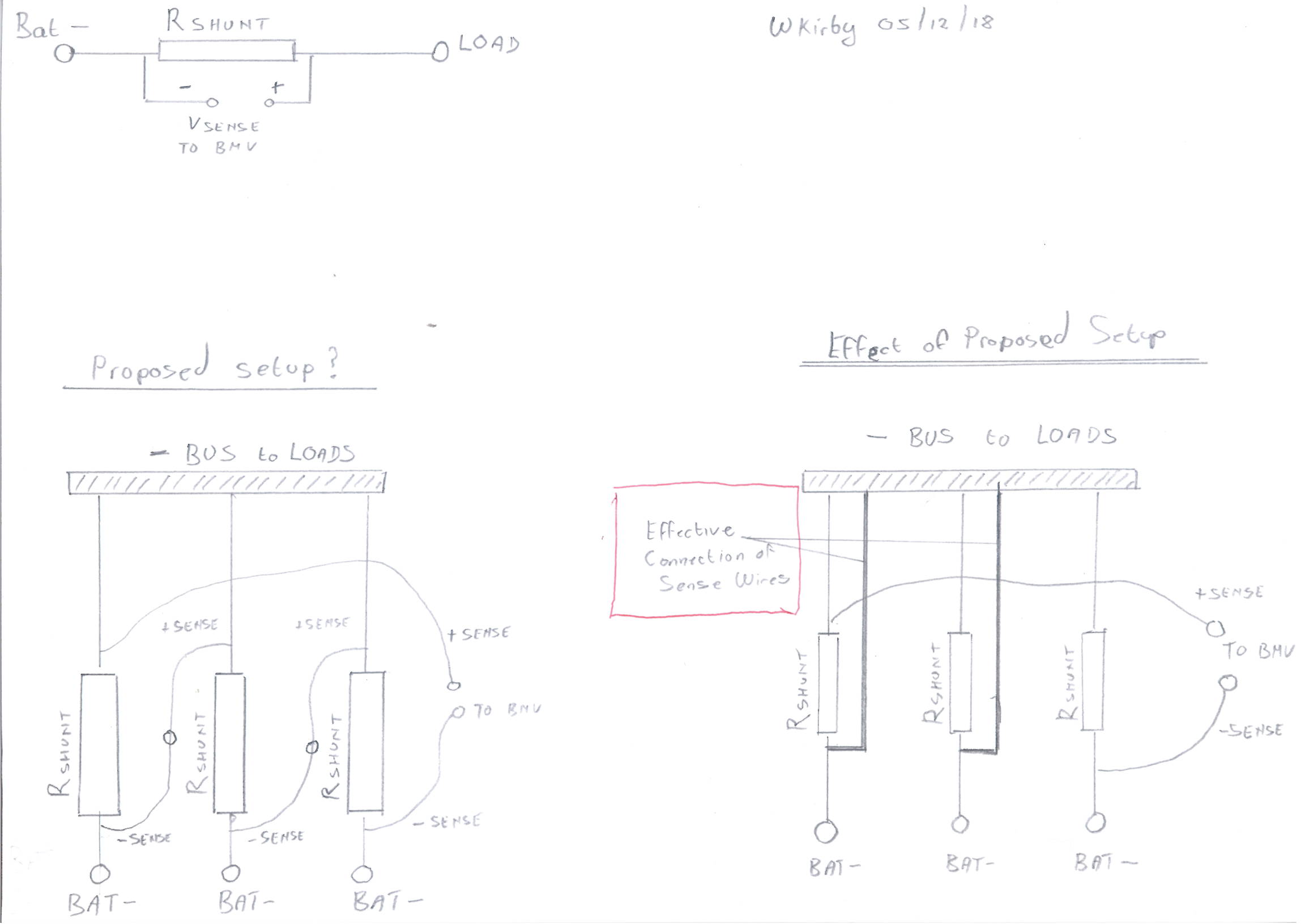I used to have a 24V system so the cabling is very heavily sized. (Multiples of 50mm2).
I have changed to 48V now, but I figure the heavier Cu cables are still serving me well.
I have 1200AH of batteries, 48 x12V, arranged in 3 physical banks, each bank from its own set of busbars.
The long and the short of it is that there is no real bottle neck of cabling that is suitable to add a single shunt. Ideally, I need to fit a shunt in a minimum of 3 places.
Ideally, I want to install say three 1000A shunts in parallel to the batteries and put the output in series to the BMV. I could then tell the BMV it's a 333A/50mV shunt.( Which the manual suggests can be done).
But I've never physically handled the BMV device, so before I go out and buy one I like to know if this is doable, in other words, that the shunt's output is an analogue mV output and not digitized before it gets to the BMV.

